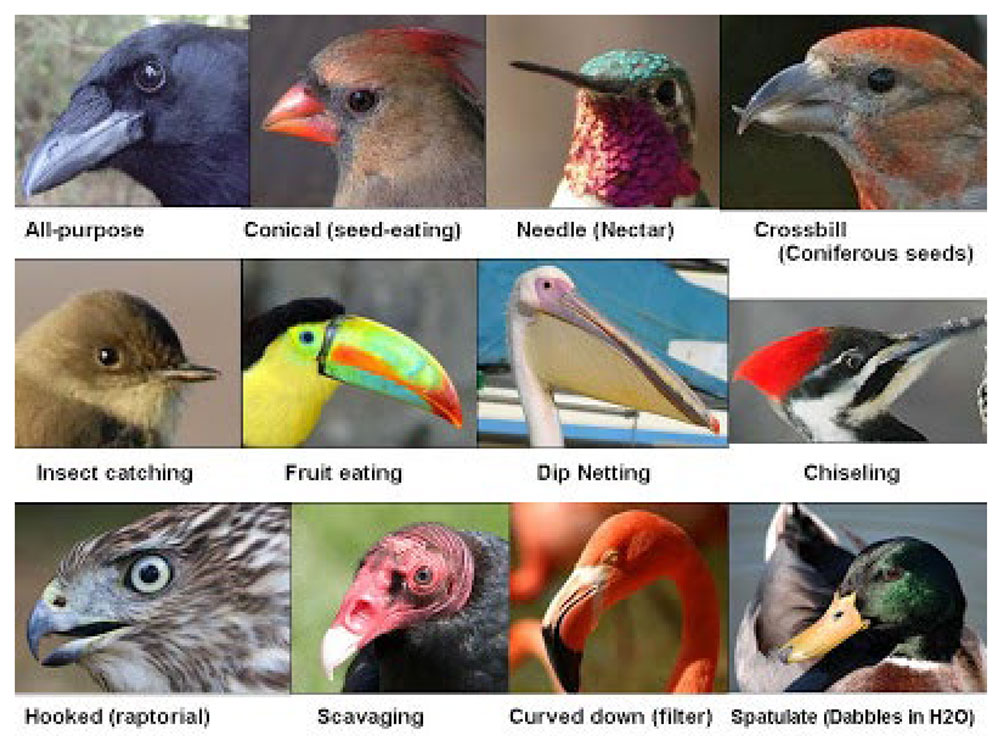Beaks / Bills
This is very important to know for rehabilitators, not only to know what foods they eat, but how hard they bite. There is: “OUCH let go” I’ll stop the bleeding when I’m done ... “ok I’ll say Ouch if it makes you feel better,” ... “did it swallow my fingertip?” and … “is my eye still there?” !
(the last one is another scary story)
Beaks come in many shapes and sizes, that are adapted for the types of foods that they eat. There are many more very specialized beaks, but this is a general explanation of how they work.

Beaks are made of keratin, the same material as fingernails, which continue to grow throughout the bird’s life. Feaking - is a term to describe the rubbing of the beak on perches, or other surfaces, to remove debris from the beak. It also helps to keep the beak trimmed and shaped for the birds to be able to consume food.
If a bird has an injury that involves the alignment of the bill, it usually will grow unevenly, because the normal wearing on the beak is also how it maintains the shape.
“Cola” is an American kestrel, who was injured at the Niagara Air Base. Her bill was damaged, and is slightly misaligned, so we need to trim her beak several times a year (she loves that). She is non-releasable, as she would starve in the wild. She has been with us since 2006, and was an adult when rescued.
